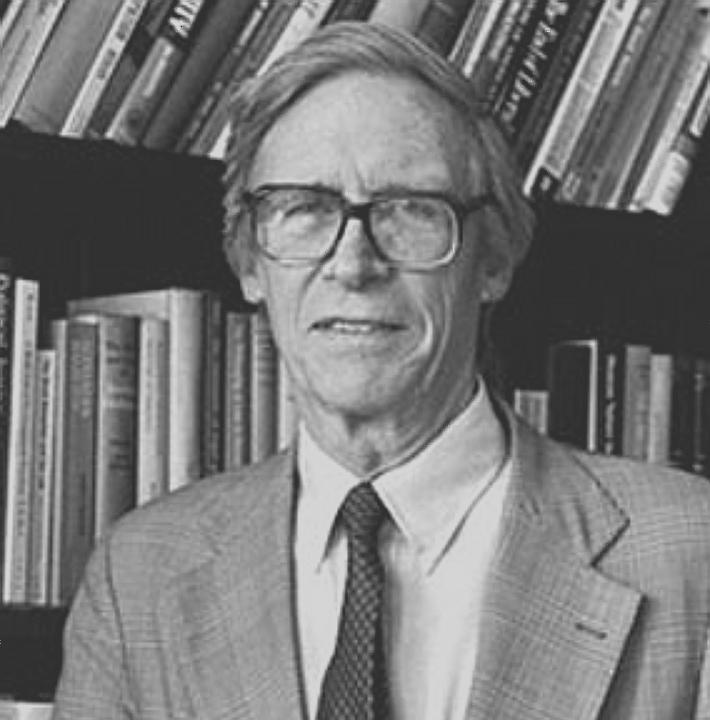John Rawls

John Bordley Rawls (1921-2002) was one of the most influential American philosophers after the Second World War. He published his first book and widely considered his greatest work, A Theory of Justice, only in 1971 at the age of 50 but the book immediately came to be regarded as one of the most important works of political philosophy. His philosophy, also known as Rawlsianism received either strong support or strong opposition from political philosophers, especially the proponents of utilitarianism as Rawls’s concepts challenge the utilitarian principles.
Early Life
John Rawls was born in 1921 in Baltimore, Maryland as the second son to one of Baltimore’s most influential attorneys William Lee Rawls and his wife Anna Abell Stump Rawls. At a young age, Rawls and his family were struck by two tragedies. When he was 8 years old, Rawls got a contagious bacterial disease diphtheria. He recovered but his younger brother who contracted the disease from him didn’t and died from complications. One year later, Rawls got ill from pneumonia. Another younger brother contracted the illness from him and died.
Rawls went to school in Baltimore and continued education at Kent School in Connecticut. After graduating from Kent School, he studied at the Princeton University. Soon after graduating from the Princeton University, Rawls was enlisted in the US Army and sent to the Pacific theatre, serving as an infantryman. The US Army offered him the position of an officer but he refused and left the Army.
Later Life and Death
After leaving the Army, Rawls returned to Princeton where he received a doctorate from philosophy in 1949. In the same year, he married Margaret Fox with whom he had four children. Until 1952, he taught at the Princeton University and then went to the Oxford University through the Fulbright Programme. Upon returning to the United States, Rawls began to work at the Cornell University as an assistant professor. In 1962, he became full professor at the Cornell University but in the same year, he took the position of a professor of philosophy at the Harvard University where he taught until the 1990s.
Despite his international fame, Rawls more or less lived a withdrawn life. Instead of becoming a public intellectual, he spent most of his time as an academic and family person. In 1995, he suffered a stroke which prevented him from continuing with his work. However, he was able to write three more books – The Law of Peoples, Lectures on the History of Moral Philosophy and Justice as Fairness: A Restatement which was published shortly before his death. John Rawls died in 2002, aged 81.
Rawlsianism
Rawlsianism describes the ideas and concepts of John Rawls but above all, the term describes Rawls’s principles of justice as he presented them in his first and most influential book A Theory of Justice. In it, he introduced the so-called original position, a hypothetical situation involving hypothetical subjects who are given the task to create a political and economic system for a society in which they are to live after reaching an agreement. Each of the hypothetical subjects, however, was put behind the so-called veil of ignorance which deprived them of knowledge about their social position, income, wealth, gender, religion, race and similar factors they could take advantage of to improve position for themselves and their immediate descendants. Rawls gave them only the basic knowledge about social organisation and human psychology, and knowledge of what he called social goods - things every rational person would want: opportunities, rights, liberties, wealth and self-respect. Rawls argued that his hypothetical subjects behind the veil of ignorance would agree on two principles of justice. They would agree that every member of the society should have 1) political liberty such as the freedom of speech, the right to assembly, the right to vote, etc. (equality principle) and that the social and economic inequalities are a) to the greatest benefit of the least advantaged and b)to guarantee equality of opportunity (difference principle).
Other Works and Concepts
Political Liberalism (1993)
Although his A Theory of Justice soon met criticism from many influential philosophers of the time, Rawls didn’t respond to his critics (except through his articles) until 1993 when he published his second book titled Political Liberalism. In the latter, he edited some of the concepts with which he dealt in A Theory of Justice but didn’t depart from his main ideas. Besides responding to criticism of A Theory of Justice, Political Liberalism also deals with how to maintain just political system in the existing situations that are marked by philosophical, moral and religious diversity.
The Law of Peoples (1999)
In his third book, The Law of Peoples that was published in 1999 (first as an article in 1993) Rawls applied his theory of justice to international relations. Just like in A Theory of Justice, he developed his concept of how different peoples should interact and behave with one another on the basis of original position. He put representatives of different peoples behind the veil of ignorance with a task to develop principles that would govern international relations.
Lectures on the History of Moral Philosophy (2000)
This book is a collection of Rawls’s lectures while he taught at the Harvard University.
Justice as Fairness: A Restatement (2001)
In the last book that was published before his death, Rawls responded to criticism of his most influential work but he also included an overview of his main concepts and issues he didn’t address in his prior writings.
Two more books were published after his death in 2002:
Lectures on the History of Political Philosophy (2007)
A Brief Inquiry into the Meaning of Sin and Faith (2010)